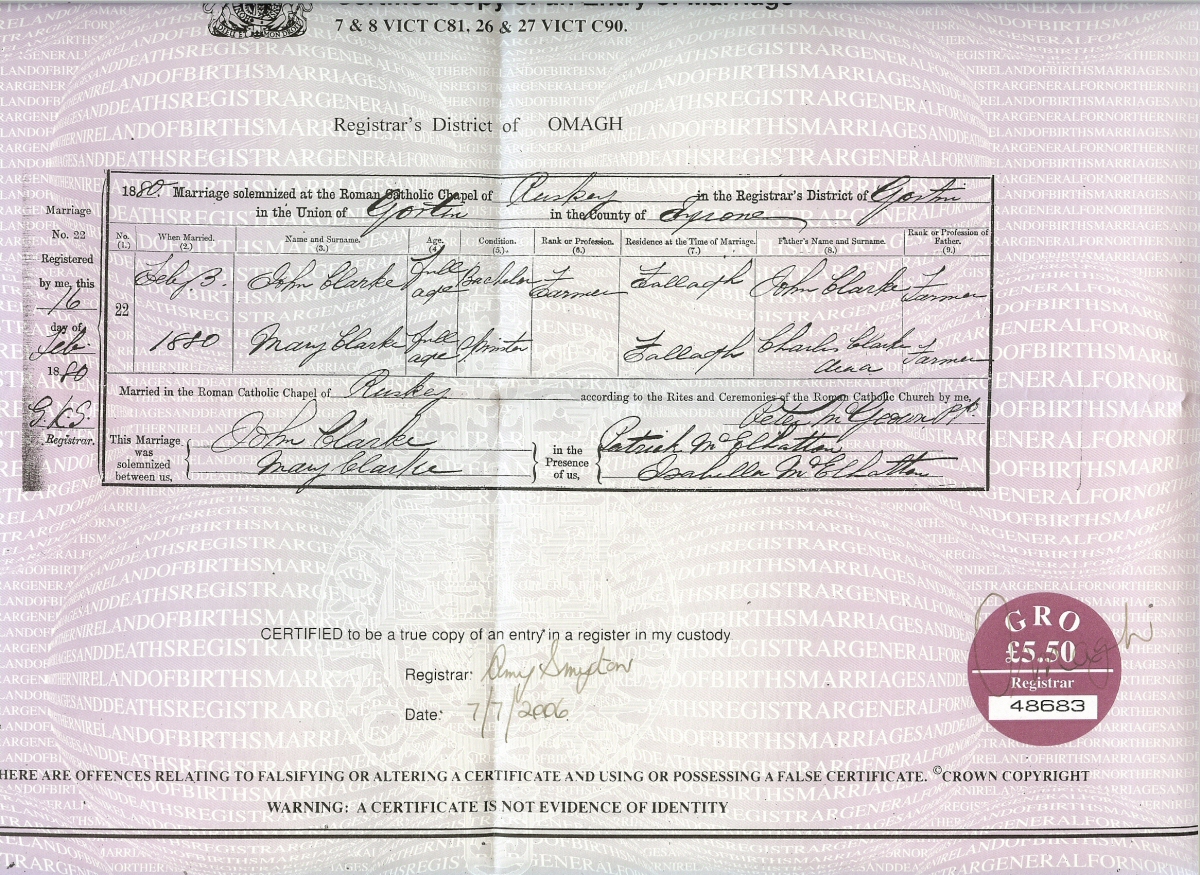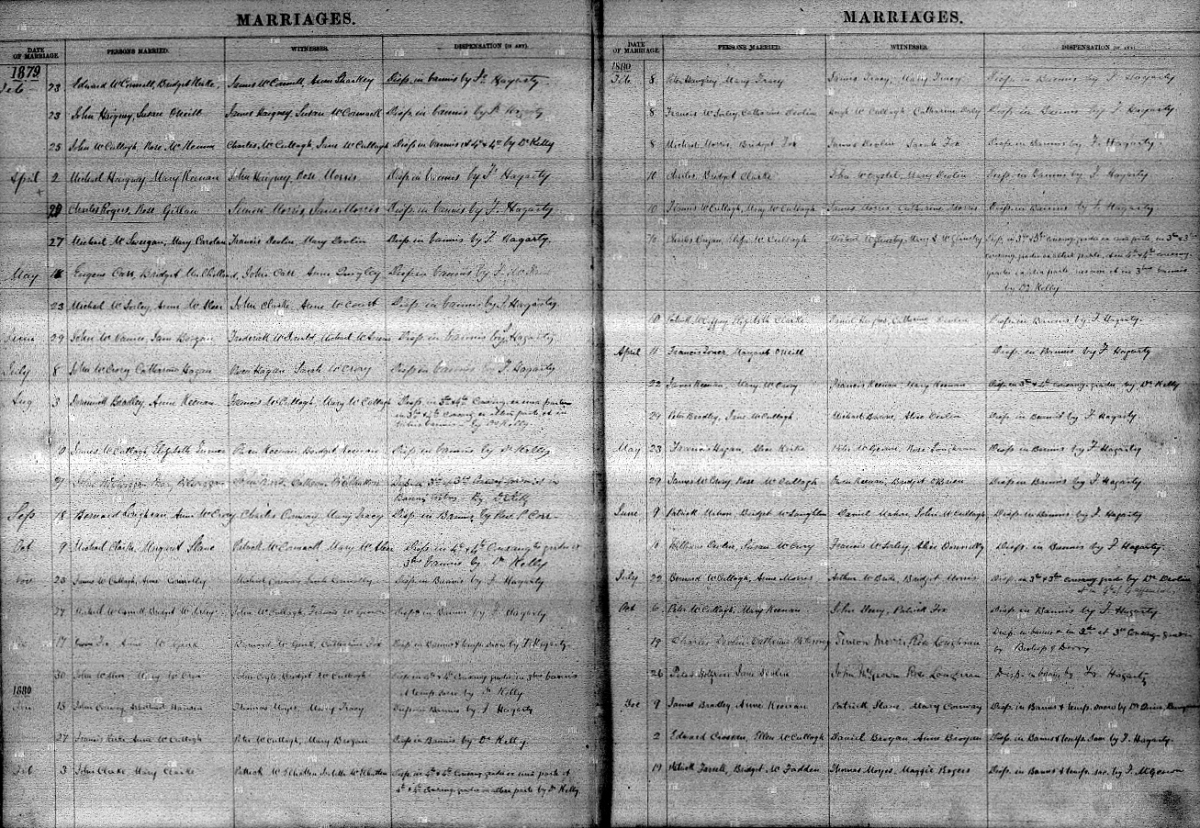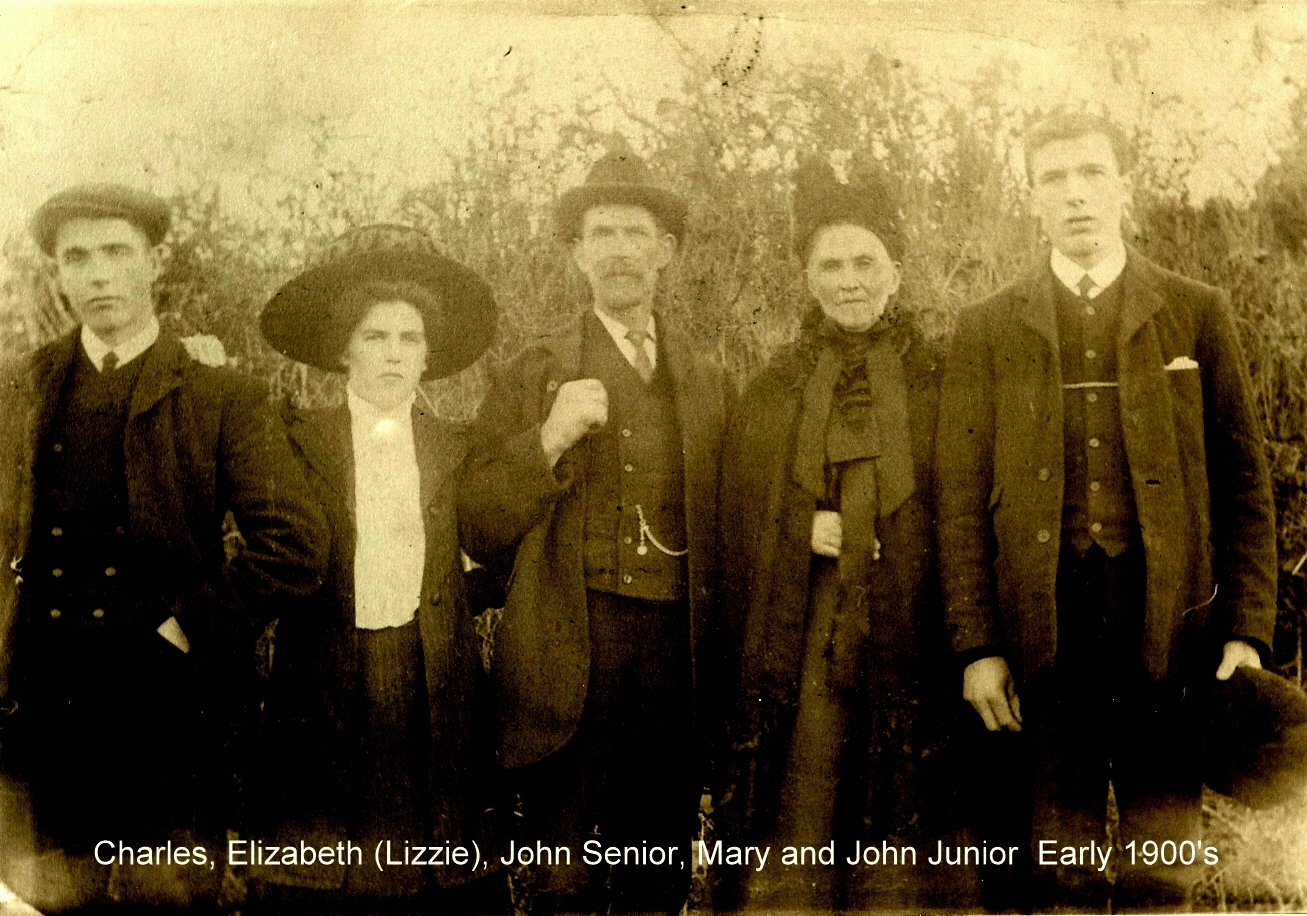Marrying Cousins & the Catholic Church Research
Research on the marriage of John & Mary Clarke of Lower Fallagh, Co. Tyrone
vershe[at]vershe.com
Searching for the relationship of John and Mary Clarke
Per their 1880 civil marriage certificate my great grandparents, John and Mary Clarke, shared the same surname and were living in the same townland.

The newly indexed Roman Catholic records below supplied more information as to their relationship as third cousins. Both traced to a common great-great grandfather.

John and Mary are recorded bottom left.. [Tuesday] February 3, 1880.

Close-up of dispensation by Dr Kelly.
Marriage dispensations were necessary when the two people marrying were related, consanguinati, and the relationship was given in terms of degrees, with siblings first degree, first cousins second degree, and second cousins third degree.
Thus a couple recorded as consanguinati in tertio grado are second cousins, information which can be of value in disentangling earlier generations. A less frequent Latin comment, affinitatus, records an earlier relationship by marriage between the families of the two parties. Reference - The Irish Times
AND
Marriage dispensations can prove particularly valuable to the family historian. Under Catholic canon law, a number of impediments to marriage may be dispensed with or forgiven by the bishop, including relationships within the fourth degree of consanguinity (blood relationship) or affinity (relationship by marriage) as well as spiritual relationships such as a godparent. In addition, if an individual came from a residence not within the diocese, a dispensation was required.
A marriage dispensation record generally outlines the relationship of the individuals involved, in many cases extending backward into the third or fourth generation (to a common great-grandparent), with extensive genealogical data.
AND
It is important to know that in this 19th Century Roman Catholic Ireland, a strong tradition had built up that the church Sacrament of Marriage should best be performed just before ‘Lent’, which is the moveable, 40-day period of penance, fasting & abstinence leading up to Easter Sunday. Lent opens with ‘Ash Wednesday’, which is preceded by ‘Shrove Tuesday’, also known throughout the Christian & Eastern Orthodox worlds as ‘Pancake, Blini or Shrove Tuesday’, or Mardi Gras. In Russia, there is still observed a ‘bleenee week’, where on 7 sequential days, the cupboards are emptied of all luxury foods in a set pattern of blini / pancake spreads, in preparation for the fasting period of 40 days of penance and abstinence. That is the main reason why you will notice that most (>90% ?) of these marriages are in a ‘season’ based around February, which was usually about 40 days before the Full Moon at Easter. It is even possible that this Register was deliberately not completed for some marriages outside that Shrovetide (Refer to the ‘gaps’ in the 1860s). Reference - Clare County Library
And
7. This is the 1st marriage with a dispensation, = 4th degree & 4th degree cousin-relationship. Probably it was delayed from before Lent because of the wait for permission. For closer and closer ‘cousin’ relationships, higher amounts of money had to be paid to the Church for dispensation / permission to marry, and permission from higher authority was sought. 3rd cousins could be allowed to marry by the parish priest, while 2nd cousins or multiple-related parties could be allowed to marry by the Bishop of Killaloe. For 1st cousins, or for a widower to marry his late wife’s sister, for instance, the Pope in the Vatican had to approve of it. There are two of these in this Register, from the ‘Papa’ in The Vatican in Rome
Relationship by affinity came through re-marrying a member of one’s late
spouse’s family. Consanguinity, or blood relationship, was to one’s own
cousins, etc.
Example:
Consanguinity Dispensation 3rd & 3rd degree for 2nd cousins to marry.
In Canon Law, the ‘degree of relationship’
is the number of generational steps to the common ancestor, from husband
first, & then from his wife. So, from the groom to his father to his
grandfather to his great-grandfather = 3.
Thus Dr. Kelly’s dispensation for John and Mary Clarke recorded as 4th and 4th degree revealed they were third cousins who shared a common great-great-grandparent.
